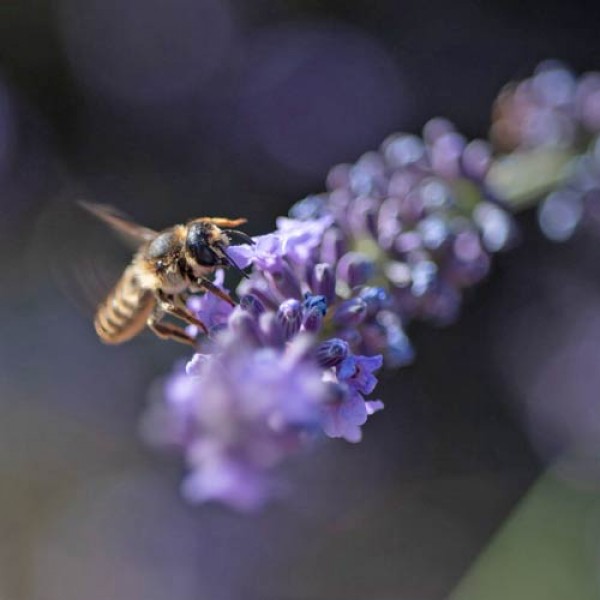Cookie preferences
This website uses cookies, which are necessary for the technical operation of the website and are always set. Other cookies, which increase the comfort when using this website, are used for direct advertising or to facilitate interaction with other websites and social networks, are only set with your consent.
Configuration
Technically required
These cookies are necessary for the basic functions of the shop.
"Allow all cookies" cookie
"Decline all cookies" cookie
CSRF token
Cookie preferences
Currency change
Customer-specific caching
Individual prices
PayPal payments
Selected shop
Session
Comfort functions
These cookies are used to make the shopping experience even more appealing, for example for the recognition of the visitor.
Matches only with "acrisCookie"
Note
Statistics & Tracking
AWIN Affiliate Marketing
Affiliate program
Track device being used

Aroma garden - garden of the senses How do you create a scented garden? Everyone loves the... more
Garden of the senses
Aroma garden - garden of the senses
How do you create a scented garden?
Everyone loves the idea of being able to put their nose in a fragrant rose blossom on a walk, but there is often nothing of a fragrant variety of flowers to be found in the home garden.Lavender, roses, rosemary, catnip, scented nettle and many more can often only be found in professionally landscaped gardens.
How can you create your own fragrant idyll? We`ll enlighten you ;)
What is a fragrance garden / aroma garden?
A fragrance garden is either a section of the garden that has been specially created for fragrant flowers and plants, or you can even design your entire garden as a complete oasis for the senses.You can create a very individualised garden and create an exciting environment with many different levels. It should be noted that many fragrant shrubs, flowers, hedges and trees need reliable and constant sun and warmth to develop an intense scent.
It is also important in a sensory garden that the scents of the plants are harmonised, as too many different scents in one place can be irritating.
In addition, everyone has a very personal sense of scent and may love the scent of one flower exuberantly, while perceiving another as distinctly unpleasant.
What do you need to consider if you want to create a scented garden?
1. which scents do I like? It`s best to draw up a list of plants that you perceive as having a positive scent beforehand.2. should the whole garden or just part of it become a sensory garden?
3. if only part of the garden is to be created, how do you want to separate it from the rest and where do you want to place it so that the scents are not perceived everywhere?
4. at what time of year do I want a particularly intense fragrance? (plant selection)
5. which part of the plant emits the fragrance?
6. would I like to create a scented garden with water points, a stream etc. and different levels?
Animals love scents too!
When creating a scented garden, you should also bear in mind that animals also love scents. Bees, bumblebees and wasps in particular are attracted to the sweet scent of flowers. So if you want to spend more cosy hours in the garden, reading, relaxing and eating, the scented areas should be a little away from this space.
How do i create a harmony of fragrances?
When creating a scented garden, you should first - as already mentioned - go by your own scent perception. But there are also plants whose scents harmonise particularly well and others that don`t go together quite so well. As a general rule, you should try to arrange the plants according to intensity and use various large scented perennials as solitary plants.Sometimes you can also take a closer look at various perfumes and room fragrances as a good example, as these fragrances in particular play with harmonies that can often be transferred one-to-one to the planting in the garden. For example, very sweet fragrances are often mixed with lemony notes. This means that fragrances such as lemon balm go very well with sweet or honey-like fragrances or sweet-fruity fragrances.
Exciting to know:
There are different fragrant shrubs and flowers that give off more intense scents at different times of day.What fragrant shrubs, plants and bushes are there?
Flowers that only become fragrant in the evening, for example, includeHoneysuckle, night jasmine, evening primrose, silver leaf, levkoye, soapwort, gold lacquer
Herbs that have an intense fragrance:
Mint, rosemary, sage, thyme, camomile, lavender, wild garlic, woodruff, fennel, lemon balm
Flowers that exude their fragrance throughout the day:
Scented roses, lilacs, vetches, lilies, chocolate flower, vanilla flower, wonder flower, garden carnation, gardenia, freesia, sweet pea, Indian nettle, peony, yarrow, scented nettle, wisteria (blue rain)
Fragrant flowers in spring:
Hyacinths, lily of the valley, lilac, scented violet, forsythia, cowslip
Flowers and shrubs that also exude fragrance in winter:
Shade flower, winter jasmine, witch hazel, winter snowball, ornamental quince, winter honeysuckle
Large trees for the scented garden:Noble fir, eucalyptus, false acacia, common robinia, gingerbread tree, weeping cherry, winter lime tree
Fragrant shrubs:
Lilac, laburnum, privet, witch hazel
Which fragrances go well together?
Anyone who has ever been to a rose garden will know that lavender and scented roses are particularly popular in combination. The two fragrances harmonise particularly well and enhance the olfactory experience. Rosemary or mint can also harmonise well with fragrant roses, depending on your own scent preferences.Hyacinths can also be planted as a whole group in spring if you like the scent. If one group is too many, you can create an early-flowering bed in which the strongly scented hyacinths are complemented by crocuses, tulips or snowdrops, which are less fragrant themselves.
In general, Mediterranean herbs always go very well together; you can combine rosemary, thyme, sage and mint here. Cherry laurel, citrus plants and clematis climbing plants go well with these delicious herbs.
Lily of the valley, hyacinths and wonder flowers feel at home in the shade of fir or pine trees, which themselves exude tart notes.
Read, write and discuss reviews... more
Customer evaluation for "Garden of the senses"
Write an evaluation
Evaluations will be activated after verification.
Viewed








